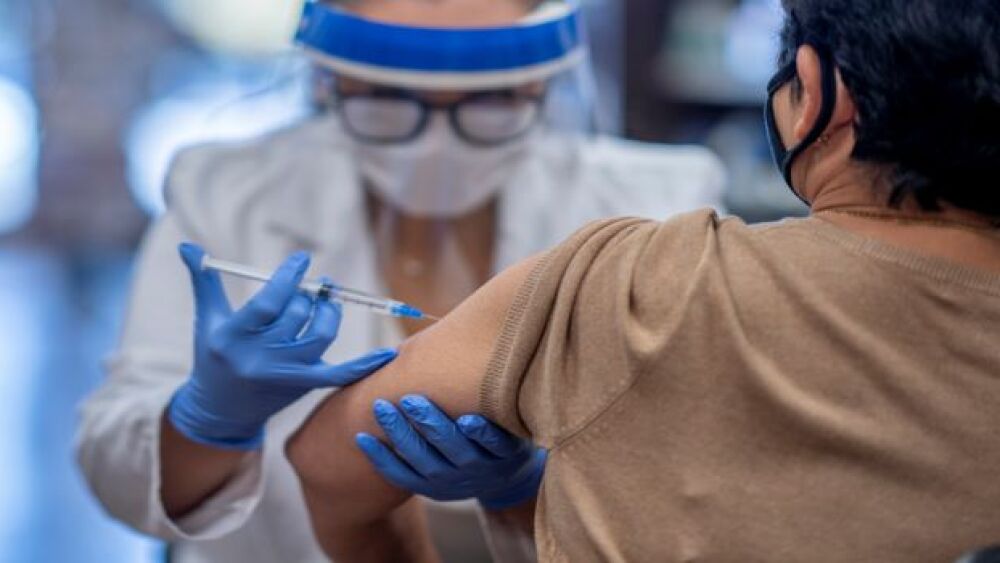While a handful of companies have dominated the COVID-19 vaccine market in the U.S. and Europe, a number of biotechs are continuing to develop vaccines to use as booster shots.
Although a handful of companies have dominated the COVID-19 vaccine market in the U.S. and Europe — Pfizer-BioNTech, Moderna, Johnson & Johnson, AstraZeneca-Oxford — a number of companies are continuing to develop vaccines in hopes they can be used as booster shots.
Sanofi-GlaxoSmithKline
Sanofi and GlaxoSmithKline reported data from two clinical trials, VAT02 Cohort 2 and COVIBOOST VAT013, evaluating their next-generation COVID-19 booster vaccine. The vaccine candidate leverages a Beta variant antigen and GSK’s pandemic adjuvant.
The Phase III VAT02 Cohort 2 study generated a significant increase in antibody titers above baseline 15 days after receiving the shot against multiple variants of concern in adults who previously received the mRNA COVID-19 vaccine (Pfizer-BioNTech and Moderna). It demonstrated a 40-fold increase against the original Omicron variant, BA.1. It also doubled the number of neutralizing antibodies against Omicron BA.1 and BA.2 compared to the D614, the original parent virus booster.
The COVIBOOST study, conducted in patients who previously received the Pfizer-BioNTech shots, induced a higher immune response than the Pfizer-BioNTech booster or the Sanofi-GSK first-generation booster.
“COVID-19 keeps evolving and the combination of emergence of variants and waning immunity is likely to lead to the need for additional booster shots, at least in some populations,” Thomas Triomphe, executive vice president of Sanofi Vaccines, said in a statement.
Novavax
Currently, Novavax’s COVID-19 vaccine is under review by the U.S. Food and Drug Administration. Last week, the FDA’s advisory committee recommended the shot, but the agency plans to review changes the company made to its manufacturing process before it authorizes the shots in the U.S.
In April, the company initiated a Phase III trial to evaluate its COVID-19 vaccine as a booster shot in adolescents. The Phase III PREVENT-19 study is looking at a third dose of the shot in kids ages 12 through 17. This is designed as a booster to the two previous shots of the same vaccine. Monday, the Australian Therapeutic Goods Administration (TGA) granted the vaccine provisional registration as a booster for people 18 and over.
CyanVac
CyanVac, based in Athens, Georgia and Los Gatos, Calif., recently reported preclinical studies of its intranasal PIV5-based COVID-19 vaccine candidate, CVXGA1, for use as a booster in people who received mRNA-based vaccines. CVXGA1 expresses the Spike protein from the original Wuhan strain of the virus and uses a proprietary transformational parainfluenza virus 5 (PIV5)-based vector. When tested in a hamster model, it appeared to induce broad serum neutralizing antibodies against the original Wuhan strain and other strains.
Moderna
Moderna announced last week that its Omicron-containing COVID-19 booster candidate, mRNA-1273.214, demonstrated superior antibody response against Omicron in a Phase II/III trial. This booster contains its original COVID-19 shot, Spikevax, as well as a vaccine targeting the Omicron variant. The company hopes to submit the data to regulators soon and have the Omicron-specific booster available in late summer.
“Looking at these data alongside the durability we saw with our first bivalent booster candidate, mRNA-1273.211, we anticipate more durable protection against variants of concern with mRNA-1273.214, making it our lead candidate for a Fall 2022 booster,” Stephane Bancel, Modern’s chief executive officer said.
Pfizer-BioNTech
For the most part, Pfizer and BioNTech appear to be leaning on the use of their original vaccine with multiple booster doses to provide immunity to variants, such as the Omicron variant and its various subvariants. However, in April, the two companies began evaluating a booster that specifically targets the Omicron variant and subvariants. They hope to have it available by fall.
“It is a possibility that we have it by then; it’s not certainty,” Albert Bourla, Pfizer’s chief executive officer said in April. “We are collecting data right now, and as far as I know, Moderna, as well as us, are working on Omicron or different enhanced vaccines.”
AstraZeneca
Back in December 2021, AstraZeneca and Oxford University began taking steps to create an Omicron variant vaccine. There haven’t been any announcements since. The original vaccine received authorization as a third dose booster in Europe in late May, to be given after two shots of that vaccine or an mRNA vaccine.
The company’s antibody cocktail, Evusheld (tixagevimab and cilgavimab), appears to be a bigger focus. On June 8, they published results showing the therapy provided clinically and statistically significant protection against progression to severe COVID-19 or death. Not surprisingly, the earlier in the disease progression it was used, the better the result.





